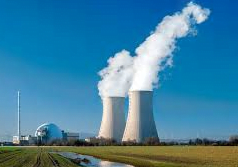JT-60SA Commences Operations
On December 1, the world witnessed the official commencement of operations for JT-60SA, the largest and most advanced nuclear fusion reactor, located in Japan’s Ibaraki Prefecture. This groundbreaking project is a collaborative effort between the European Union and Japan.
Key Highlights
- JT-60SA represents a leap in nuclear fusion technology, offering a potential solution to humanity’s future energy needs.
- JT-60SA is collaborative effort involving over 500 scientists, engineers, and more than 70 companies across Europe and Japan.
- Unlike conventional nuclear power plants using fission, JT-60SA employs fusion, a process that involves merging two atomic nuclei rather than splitting one. This distinction positions nuclear fusion as a cleaner and more sustainable energy source.
- Housed in a hangar in Naka north of Tokyo, the JT-60SA reactor stands as a six-storey-high machine. Its design features a doughnut-shaped “tokamak” vessel, intended to contain swirling plasma heated up to an astonishing 200 million degrees Celsius.
- JT-60SA serves as a forerunner to the International Thermonuclear Experimental Reactor (ITER) in France. Both reactors share the goal of coaxing hydrogen nuclei to fuse into a heavier element, helium, releasing energy in the form of light and heat.
- While JT-60SA successfully commenced operations, its counterpart ITER in France faces delays and technical challenges, including budget overruns. Researchers at both facilities aspire to achieve the holy grail of nuclear fusion technology: net energy.
Month: Current Affairs - December, 2023
Category: International / World Current Affairs








